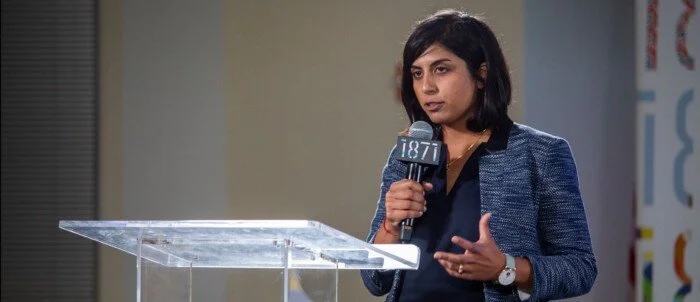By Chris Wu
Global waste generation is expected to increase 70 percent by 2050, faster than any other environmental pollutant, which is why UN Sustainable Development Goal 12 aims to substantially reduce waste generation through reduction, recycling and reuse. The International Solid Waste Association estimates that when all waste management actions are considered, the waste sector could cut up to 15% of GHG emissions globally. In response, companies like Samsung, Apple and Subaru are increasingly setting ambitious waste reduction and landfill diversion goals as part of their corporate sustainability plans. Enabling the circular economy by reusing and recycling as much material and waste as possible is an important component of implementing an effective corporate waste management plan, but it can be difficult and complex for companies to execute a holistic strategy given that waste is tied to virtually every aspect of a company’s operations.
Solution
Zero Waste Recycling (“ZWR”) is an industrial services and recycling business offering outsourced waste stream management services to manufacturing operations in the Southeastern U.S. ZWR is a full-service, one-stop solution provider helping manufacturers recycle or divert up to 100% of their operational waste. They provide a variety of environmental services for their corporate clients including onsite waste collection and sorting, 24/7 waste transportation and hauling, and recycling of ferrous and non-ferrous metals, plastic, cardboard, and paper. While 75% of America’s waste stream is recyclable, companies also need solutions to help manage the remaining solid waste that is non-recyclable. ZWR offers their clients the ability to convert this waste into energy, which is considered a renewable energy source. ZWR also owns and operates their own solidification pits, which means they are able to accept non-hazardous liquid sludge waste from their clients and mix it with water and a binding agent to form hardened solid blocks. Once solidified, they can then be shipped offsite to waste-to-energy facilities.
Why We Invested
ZWR has a proven leadership team made up of industry veterans who have successfully built and sold two recycling operations. They have demonstrated strong customer satisfaction and competitive differentiation, as demonstrated by their multi-year contracts with several blue-chip corporates. We are also excited about the multiple dimensions of impact that this investment offers. The company itself has a clear focus or mission on environmental sustainability and is riding strong industry tailwinds driven by the increase in zero waste corporate sustainability goals. There is also a compelling social impact for ZWR’s employees; our investment supports an employee ownership transaction via an Employee Stock Ownership Plan (“ESOP”). The transaction effectively transfers ownership to ALL employees of ZWR at no cost to employees. In addition to potential for wealth generation typically unattainable for most employees, ESOP companies have also shown evidence of greater job stability and worker productivity. If you’re interested in learning more about employee ownership as an emerging impact thesis, you can check out the article my colleague Priya Parrish recently wrote about closing the wealth gap with alternative ownership structures.
Impact
Environmental Sustainability: ZWR helps manufacturing companies meet their landfill diversion goals and extend the useful life of materials in their waste stream. Almost all of ZWR’s clients have commitments related to sustainability and waste diversion. ZWR’s nested employee approach, where ZWR employees are embedded onsite daily at their client’s facilities, has a significant impact on their ability to achieve these outcomes more quickly and effectively. For example, ZWR has already helped one of their manufacturing clients recycle over 500 tons of waste, conserve over 350,000 kWh of energy, and divert over 2,000 cubic yards of waste from landfill. Their long-term partnerships and full-service capabilities can also support the adoption of more aggressive sustainability goals over time. By reducing the overall amount of waste that goes into landfills, they are reducing their client’s costs associated with waste disposal which offsets the additional expense of sending their non-recyclable waste to be recovered as energy (the next preferred solution in the EPA waste hierarchy after reduction, reuse, and recycling).
Economic Opportunity: Wealth inequality continues to grow in the US as economic gains accrue to the holders of capital rather than the labor providers. There has been renewed focus nationally on wages to address income inequality, however that does not address the “Wealth Gap” - 69% of Americans have less than $1,000 in savings. Employees that participate in an ESOP have been shown to have 92% higher median household net wealth and 2.5x greater retirement accounts than non-employee owners. Over 90% of ZWR’s employee base are individuals from underrepresented groups and come from low-to-moderate income (LMI) households. ZWR employees are ultimately expected to have an average ESOP account balance that is greater than 3x their annual salary, a clear indication that the ESOP structure can enable significant wealth accumulation for employees and allows them to share in the value creation of the company.









